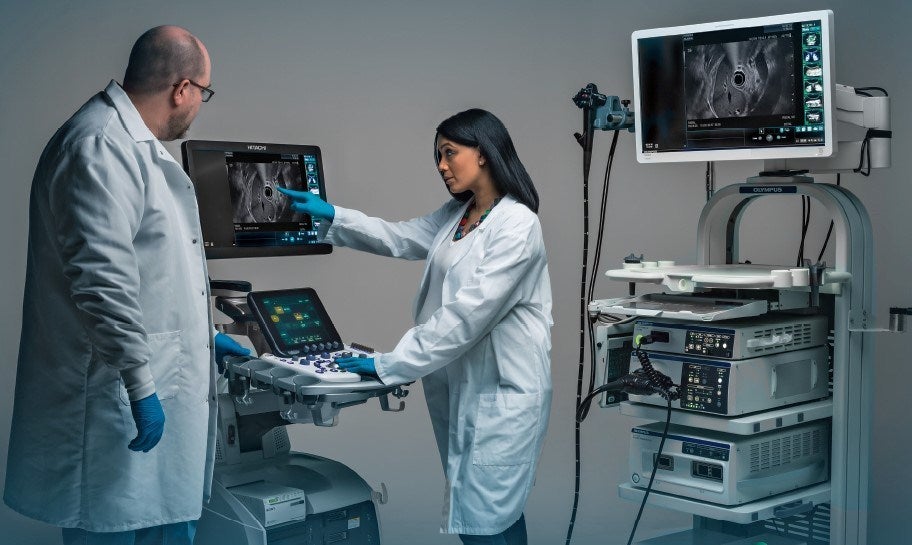
Olympus, a global technology leader in designing and delivering innovative solutions for medical and surgical procedures, announced today a strategic co-marketing agreement with Monroe Township, N.J.-based Bracco Diagnostics Inc., the U.S. subsidiary of Bracco Imaging S.p.A., a leading global company in the diagnostic imaging business. Through this agreement, Olympus and Bracco will work together to raise awareness of the role of endoscopic ultrasound (EUS) with contrast in the characterization of focal liver lesions. The contrast-enhanced harmonic endoscopic ultrasound (CH-EUS) technology will open pathways for more innovative and timely diagnosis and treatment of liver disease.
Endo-Hepatology is an up-and-coming field in the world of GI, due to the rise of liver diseasei and many emerging applications for EUS such as EUS-guided liver biopsy, EUS-guided shear wave measurement and now contrast-enhanced harmonic EUS.
CH-EUS is comprised of a contrast agent containing microbubbles and an endoscopic ultrasound system designed to allow the detection of microbubbles within the vasculature, with the intent to provide a more detailed view of potential pathology. More detailed visualization during minimally invasive procedures can provide more information to physicians for use in diagnosis. Bracco Diagnostic Inc.’s Lumason ultrasound enhancing agent (sulfur hexafluoride lipid-type A microspheres), for injectable suspension and/or intravenous use or intravesical use, is the first and currently only contrast agent available for characterization of focal liver lesions in adults and pediatric patients.
Per the terms of the agreement, Olympus will co-market the Lumason® ultrasound enhancing agent with Bracco Diagnostics, Inc. Risks associated with the use of Lumason include headache and nausea. Serious cardiopulmonary reactions are possible in patients with hypersensitivity to sulfur hexafluoride lipid microsphere or its components, but they are uncommon. See full prescriptive information here. Risks associated with EUS include or are associated with perforation, hemorrhage, fiducial placement infection, and pancreatitis.i The benefits of CH-EUS are real-time imaging, avoidance of ionizing radiation and helping medical practices provide a full liver evaluation.
“Improving the characterization of lesions in the liver with CH-EUS may mean that patients receive a more accurate diagnosis and faster treatment,” said Dr. Douglas Graham Adler, Professor of Medicine and Director, Center for Advanced Therapeutic Endoscopy (CATE), Centura Health, Porter Adventist Hospital, Denver, Co. “In addition, the patient may potentially avoid radiation and/or percutaneous or transjugular procedures to obtain tissue.”
“We gain from this agreement an additional pathway to discuss with physicians the importance of better specificity in diagnosing liver malignancies. These discussions have the potential to build on the safety and clinical efficacy advantages that Olympus’ current EUS-guided technologies already bring to physicians and their patients,” said Richard Reynolds, President, Medical Systems Group, Olympus Corporation of the Americas. “We are looking forward to good synergies that will provide more options for the diagnosis of focal liver lesions.”
Source: Company Press Release






